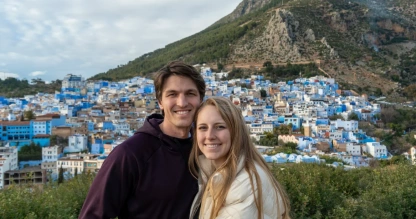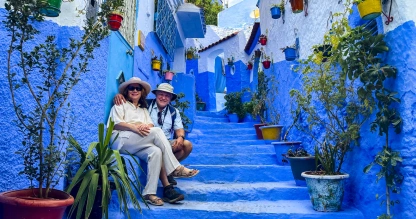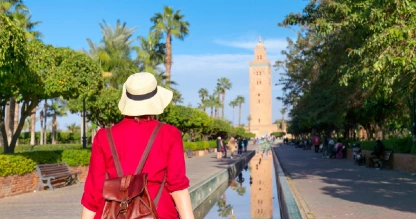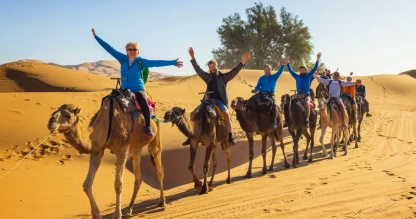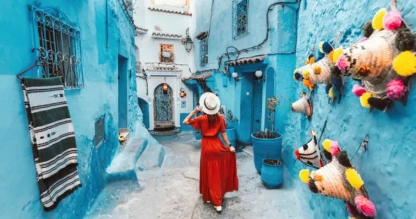
Discover the charm of Casablanca in Morocco
Casablanca's strange mixture of old and new is what most people expect from Morocco. The dynamic city is the country's commercial center, with shining office towers and convention centers.
The city's contemporary facade doesn't overshadow its rich cultural heritage. The magnificent Hassan II Mosque features one of the world's tallest minarets and can house 25,000 worshippers. The city also boasts Africa's largest artificial ports, which handles most of Morocco's international trade.
Casablanca's financial role in Morocco is clear - it handles more than half of Morocco's banking operations and industrial output. This fascinating blend of commerce and culture makes it a must-see stop on many Morocco tours.
A Brief History of Casablanca
The history of Morocco dates to the 7th century BC. The city has a blend of historic heritage that harmoniously merges with its modern skyline.
From Anfa to Casa Branca
The city's name was initially Anfa, a Phoenician and later Roman trading post because of its perfect Atlantic position. Anfa was one of the most important port cities of the 14th and 15th centuries.
Its wealth came from maritime trade. Success was turned into the ultimate downfall when Anfa was destroyed by Portuguese forces in 1468. Locally based pirates were attacking European vessels, and that triggered this revenge.
The Portuguese came back in 1515 to build a fortress upon Anfa's ruins. They named it Casa Branca (White House). The Lisbon earthquake of 1755 had destroyed the settlement. Sultan Mohammed ben Abdallah used the pretext to reoccupy it. He renamed it Dar El Beïda, the Arabic version of Casa Branca, which later became "Casablanca".
Post-independence development and modernization
Casablanca retained its status as Morocco's economic center when the country became independent in 1956. The city grew to become the country's largest city and main financial center. It set an all-time high by opening the first McDonald's franchise in Africa in 1992.
Projects like Casa Anfa have remodelled the city map. It has taken up 350 hectares of the area where the old airport stood. It offers 4.3 million square meters of flooring space for residential apartments, offices, and parks.
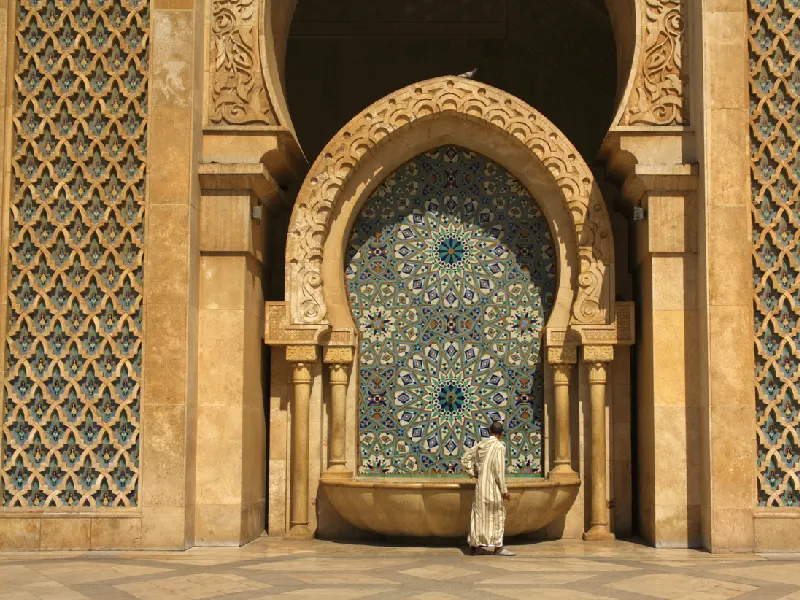
The City's Layout and Neighborhoods
Learning about Casablanca in Morocco today shows the city with distinctly demarcated districts that have their own stories to be told. Urban life presents striking contrasts between historic quarters and modern developments.
Old Medina and cultural heritage
Casablanca's earliest walled town, the Old Medina, is proof of its colonial past heritage. This compact sector provides a true glimpse into traditional Moroccan life, though smaller than the famous medinas of Fez or Marrakech.
Small squares connected by narrow serpentine alleys buzz with vendors of old handicrafts, spices, and local food. The Old Medina remains one of Casablanca's leading attractions for tourists seeking genuine cultural experience.
Ville Nouvelle and Art Deco architecture
The New City or "Ville Nouvelle" is beyond the ancient walls, constructed during the French Protectorate era. The area features a staggering collection of Art Deco and Neo-Moorish structures, most notable in Mohammed V Square and United Nations Square. The structures exhibit a blending of European modernity and indigenous Moroccan elements through curved lines, fine motifs, and hues.
The green-roofed Central Post Office and Cinema Rialto, where Allied soldiers once rallied together during World War II, are the salient landmarks. These architectural jewels give Casablanca a distinctive appearance not replicated anywhere else in Morocco.
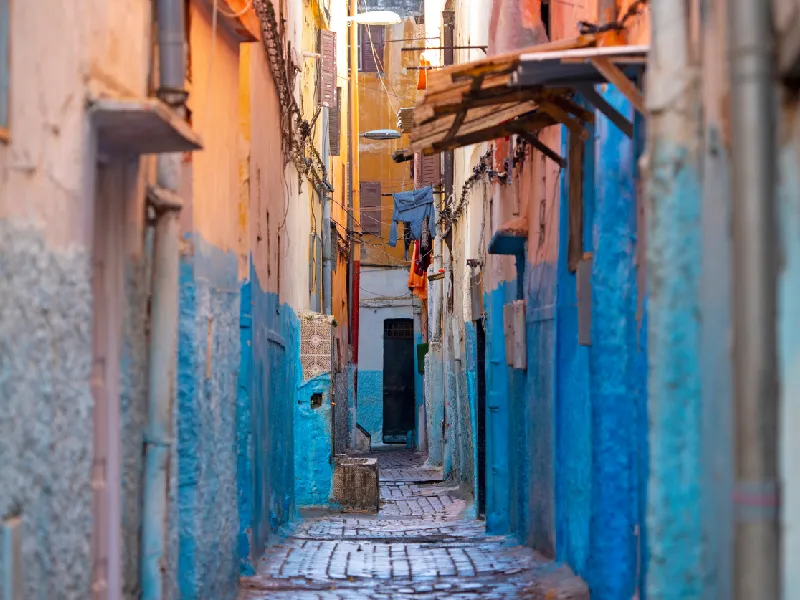
Habbous Quarter: the New Medina
French architects constructed the Habbous Quarter in the 1930s as an architectural experiment. The "New Medina" idea sought to integrate old Moroccan urbanism with new facilities.
Straight streets lined by arcades, trade-divided souks, and community facilities like hammams (traditional baths) define the quarter. The olive market of the district, traditional Moroccan bread bakeries, and high-end handicraft shops render the site both a vibrant neighborhood and tourist destination.
Modern suburbs like Maârif and Anfa
Casablanca's western edge has successful suburbs like Maârif and Anfa that typify contemporary Morocco. Maârif has emerged as a commercial center with upscale boutiques, international chains, and chic cafés.
Anfa is Casablanca's most affluent quarter, complete with luxury villas, diplomatic compounds, and the exclusive Royal Golf Club. These suburbs express Morocco's cosmopolitan character with gleaming high-rises, shopping malls, and landscaped boulevards - a far cry from what most visitors expect.
Best Things to See in Casablanca
Casablanca's architectural wonders and vibrant public spaces showcase the city's rich cultural heritage.
1- Hassan II Mosque
The Hassan II Mosque towers over Casablanca's skyline from its perch above the Atlantic Ocean. Built in 1993, this architectural marvel has a 210-meter minaret - the second tallest in the world. The mosque can hold 25,000 worshipers inside, while its courtyard fits another 80,000. It stands out as Morocco's only mosque where non-Muslims can join guided Morocco tours.
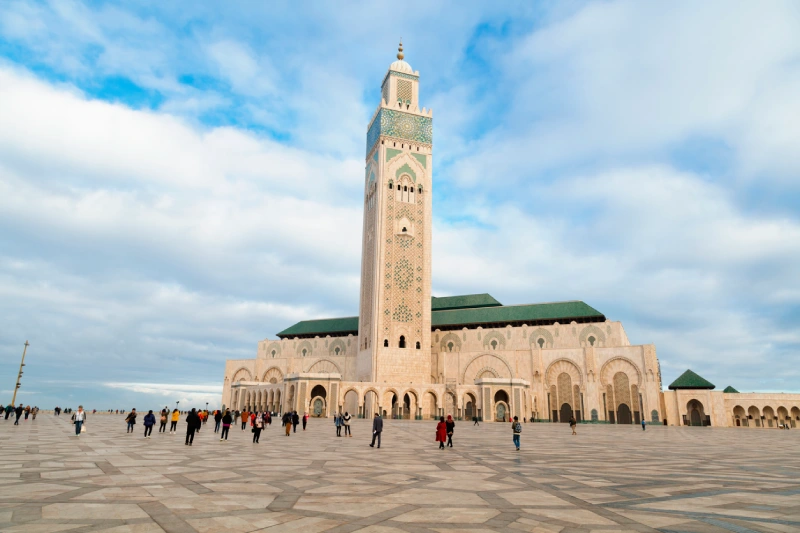
2- Arab League Park
This 30-hectare green sanctuary sits in the heart of bustling Casablanca. French architect Albert Laprade designed it in 1916, and the park went through major renovations from 2016 to 2019. Visitors can stroll past exotic plants, see historic arches from the old Anfa prison, and relax by beautiful fountains. The park's grounds are home to the Grand Theater of Casablanca and the Sacred Heart Cathedral.
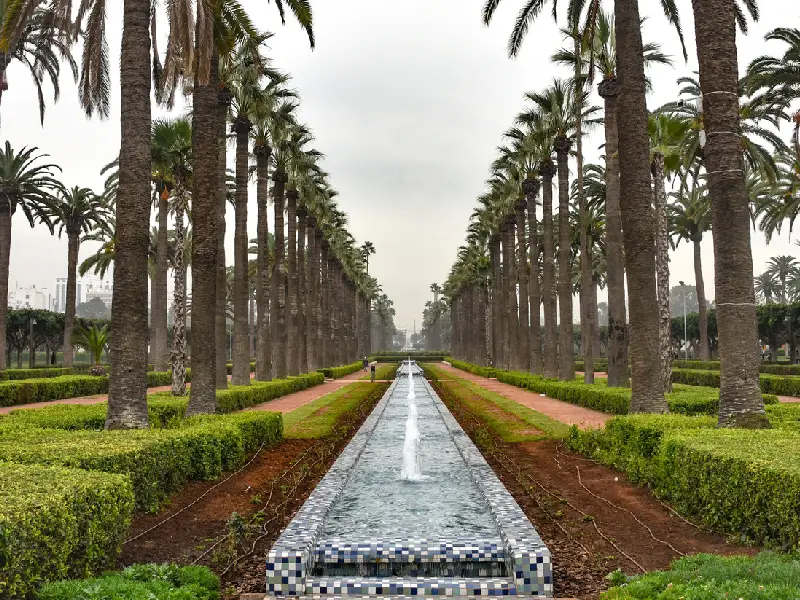
3- Casablanca Cathedral
The Church of the Sacred Heart, built in 1930, showcases stunning Art Deco architecture. The cathedral stopped religious services in 1956 and now serves as a cultural hub for art exhibitions. Its unique design blends Gothic European cathedral styles with modern elements. The building features beautiful rectangular stained-glass windows and 33-meter towers that look like mosque minarets.
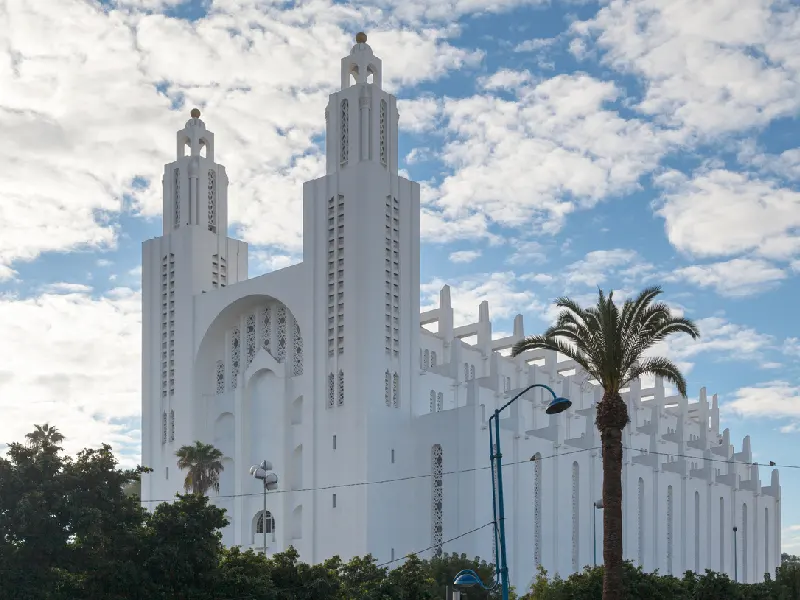
4- Central Market and seafood stalls
The Central Market sits between Rue Allal Ben Abdallah and Boulevard Mohamed V, buzzing with local energy. Fresh Atlantic seafood, including Dakhla's prized oysters, fills the stalls under the market's central dome. Shoppers can find meat, produce, spices, nuts, honey, and oils. Many vendors will cook your seafood right away in their restaurants - making it a memorable food experience.
5- Casablanca Twin Center
Two similar 28-floor towers rise 115 meters above the Maarif district. Since 1998, this landmark has housed offices, a five-star hotel, and a popular five-level shopping center. The 27th-floor restaurant and "Bar 28" at the top give guests amazing views of the city.
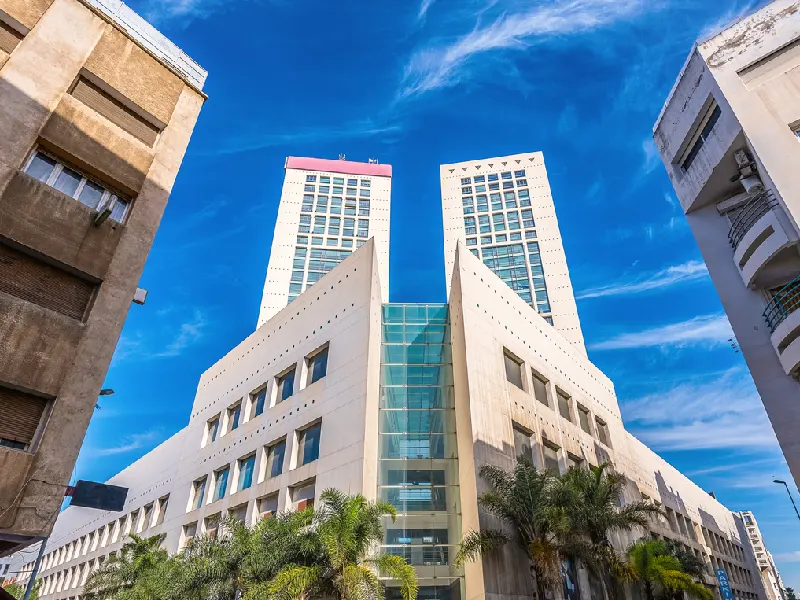
6- Corniche and Ain Diab beach
The Corniche runs along Casablanca's coast with spectacular Atlantic Ocean views. This lively promenade draws crowds on weekends with its restaurants, beach clubs, and cafés. The Hassan II Mosque anchors its northern end, while the upscale Ain Diab neighborhood lies south. This area is known for its beach, hotels, and Africa's first McDonald's, which opened in 1992.
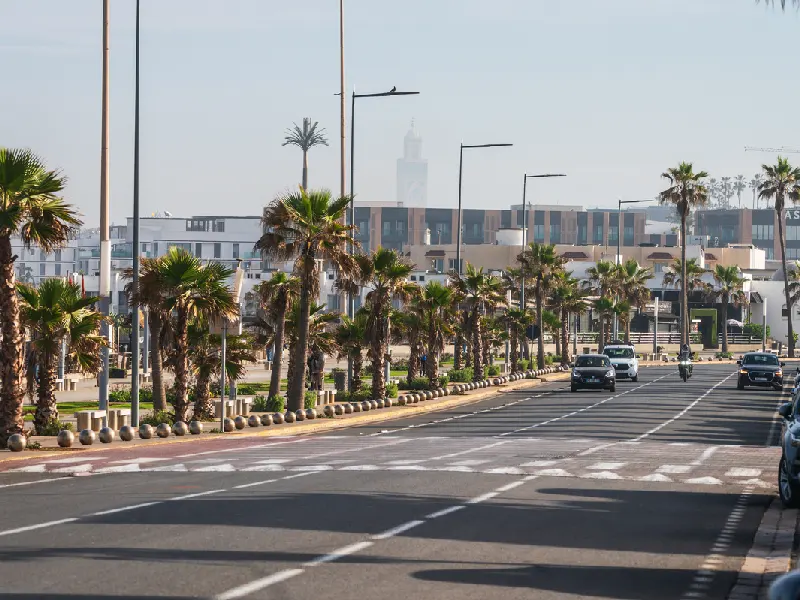
Culture, Economy, and Daily Life in Casablanca
Casablanca, Morocco thrives with economic energy and cultural spirit that defines everyday life for its people, going well beyond its famous landmarks.
Casablanca's role as Morocco's economic hub
Greater Casablanca stands as Morocco's economic powerhouse, contributing a quarter of the national GDP. The city draws 32% of the country's production facilities and 56% of industrial workers.
The city's financial strength shows in its banking sector, with 30% of Morocco's banks located here. These banks handle half of all commercial transactions. The Casablanca Port serves as the country's main trade gateway and manages 50% of international trade.
Local music, art, and street culture
Le Studio des Arts Vivants, Morocco's first multi-discipline art space, leads the city's thriving art scene. The city has become the country's rap music hub, thanks largely to the L'Boulevard Festival. Street art brightens many neighborhoods, especially during events hosted by groups like WeCasablanca. King Mohammed VI's support since 1999 has helped create this rich artistic environment.
Religious and cultural diversity
Casablanca welcomes religious diversity despite its Muslim majority. Notre Dame de Lourdes Church blends European style with Moroccan design elements. The city's multicultural spirit shows in its languages - Arabic, Berber Amazigh, and French all play key roles in daily life. This cosmopolitan outlook makes Casablanca one of Morocco's most forward-thinking cities.
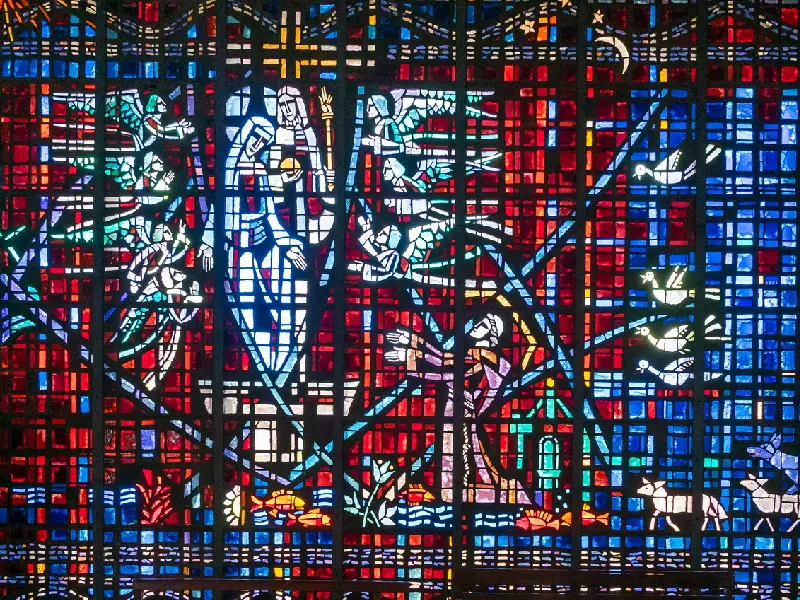
FAQS
Q1. Is Casablanca worth visiting?
Yes — its mix of history, culture, and modern energy offers a very different vibe from Morocco’s more traditional cities.
Q2. What to do in Casablanca for a day?
Visit the Hassan II Mosque, stroll the Corniche, explore the Old Medina, and enjoy fresh seafood at the city’s vibrant cafes.
Q3. Is Casablanca a walkable city?
Parts of the city, like the Old Medina and the Corniche, are pleasant for walking, though taxis are useful for longer distances.
Q4. Is Casablanca better than Marrakech?
They’re very different — Casablanca is modern and cosmopolitan, while Marrakech offers a more traditional, colorful Moroccan experience.
Q5. What is the best month to visit Casablanca, Morocco?
April to June and September to November bring pleasant weather, perfect for sightseeing and coastal walks.
Ready to discover Morocco's magic? Explore our Morocco Travel Packages and enjoy the best of Middle East trips!

